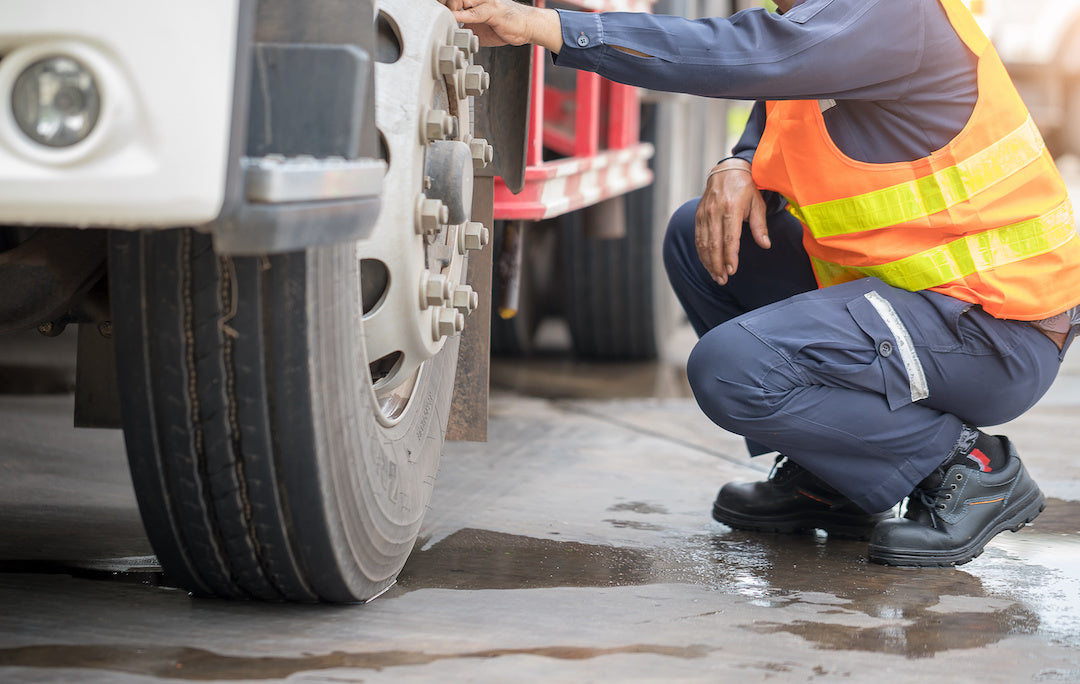
Heads Up Truckers! CVSA’s International Roadcheck 2022 is May 17th-May 19th

Commercial Vehicle Safety Alliance (CVSA) hosts the 72-hour International Roadcheck every year, and inspections will start May 17th-May 19th this year. During these inspections, the focus is on wheel ends, as past International Roadcheck data identified wheel end components as a top 10 vehicle violation.
Truck drivers will need prepare their vehicles and themselves for this week as commercial motor vehicle inspectors in Canada, Mexico, and the U.S. will conduct North American Standard Inspections. Read how to prepare for the inspection.
What Will the Inspection Look Like?
Across the U.S., Mexico, and Canada, inspectors will inspect your vehicle and yourself at weigh and inspection stations, on roving patrols, and at temporary inspection sites. During the inspections, they'll perform the North American Standard Level I Inspection and check your wheel end components, including the wheels, rims, hubs, and tires on a commercial motor vehicle.
The North American Standard Level I Inspection is a 37-step procedure that examines driver operating requirements and vehicle mechanical fitness. Specifically, steps 15 and 18 from the procedure focus on the wheels, rims and hubs of a commercial motor vehicle. Such things they'll look for:
- Cracks or unseated locking rings, studs or clamps.
- Bent, cracked or broken rims on the inside and outside wheel rims.
- Loose, broken, missing or damaged wheel fasteners and elongated stud holes.
- Check spoke wheels for cracks across spokes and in the web area or slippage in the clamp areas.
- Check the hub for lubricant leaks, missing caps or plugs.
Read the rest of what inspectors will be looking for during the wheel ends portion from CVSA's Roadcheck 2022 Flyer.
Why Focus on Wheel End Components?

Each year, CVSA focuses on a specific aspect of a roadside inspection to raise awareness. These factors that makes the component the event's focus include previous International Roadcheck data and if they’re classified as a top 10 violation. CVSA President Capt. John Broers with the South Dakota Highway Patrol states “we want every vehicle on our roadways to be in proper working order for the safety of the driver operating that vehicle and everyone traveling on our roadways.”
With wheel ends identified as a top 10 violation, it's important to check the components to ensure they'll perform well. For example, CVSA states, “wheel end components support the heavy loads carried by commercial motor vehicles, maintain stability and control, and are critical for braking.” Failure of any of these components may lead to a catastrophic crash, so it's critical to check your wheel ends before and after your trips.
If you notice any vibration, noisy or loose bearings, uneven tire wear, extremely hot hubcaps, burning or smoky smell, or abnormal brake performance during your inspection - your wheel ends may need maintenance or to be replaced.
What Happens if I Pass?
If you pass a North American Standard Level I or Level V Inspection, you’ll receive a CVSA decal.

If You Don’t Pass the Inspection
In the event of any violations during the vehicle and driver portions, you and/or your truck will place out-of-service. When this happens, you and the vehicle cannot operate until the identified out-of-service conditions are correct.
At US Cargo Control, We Want You to be Prepared for the Long Haul
We carry trucking and transportation equipment so you can secure your cargo without any worries. You can also shop by trailer type. We have enclosed trailer accessories and flatbed trailer equipment that has everything you need to outfit your truck.
With cargo securement continuously being checked, we have tips on how to secure your cargo. Read the Dos and Don’ts on Load Securement to keep others and yourself safe.
Learn more about cargo securement to keep yourself prepared:
A Comprehensive Guide to Ratchet Straps
Working Load Limit, Breaking Strength, and Safety Factor: What Do They Mean?
How Many Tiedowns Do I Need to Secure My Cargo?
A Simple Guide on How to Use a Ratchet Strap and How to Release It
How to Care for Your Ratchet Straps



